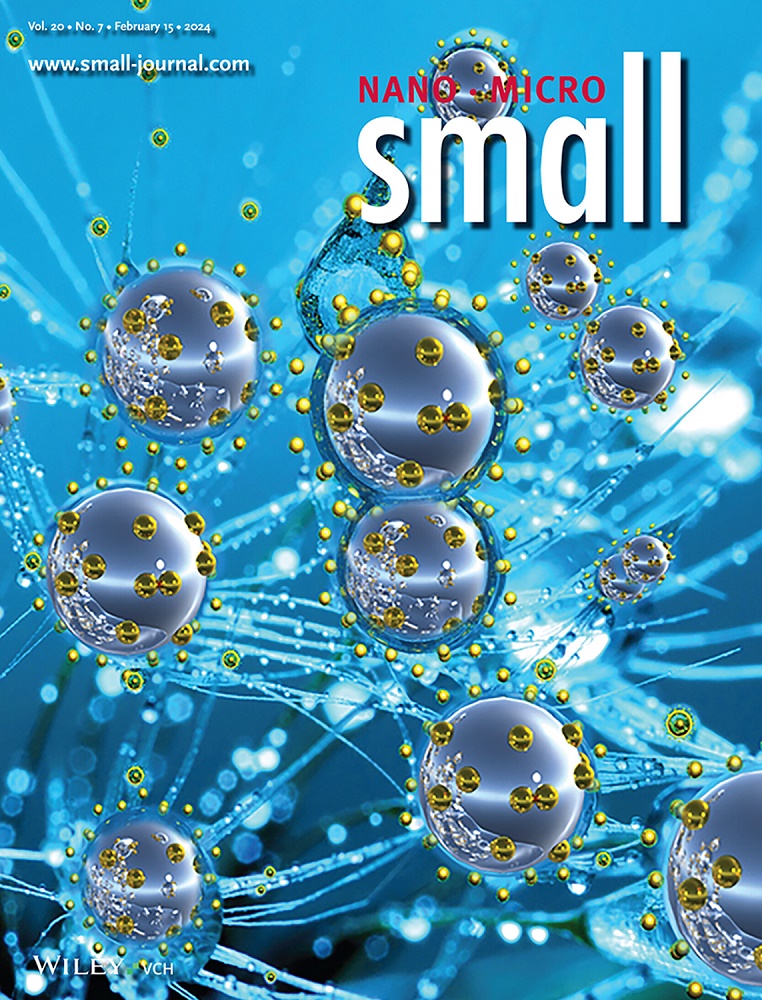阳离子插入调节蒙脱土二维纳米流控膜层间距的渗透能转换。
IF 12.1
2区 材料科学
Q1 CHEMISTRY, MULTIDISCIPLINARY
引用次数: 0
摘要
由天然丰富的粘土矿物构建的二维纳米流体膜显示出从海水和河水之间的盐度梯度中收集渗透能的巨大潜力。然而,它们的发电性能受到离子选择性和离子通量之间权衡的限制。本文采用有机阳离子Ru(bpy) 32 +部分取代层间Na +,制备了蒙脱土(MMT)二维纳米流控膜,从而实现了层间间距的纳米级调制,同时保持了其高阳离子选择性。所得到的插层膜表现出表面电荷控制的离子传输特性。在0.5/0.01 m KCl形成的50倍盐度梯度下,优化层间距的2D膜的最大功率密度为5.30 W - m-2,在相同梯度的高盐溶液(0.06/3 m)中可能提高到10.05 W - m-2。这项工作提供了一种有效的策略来调节二维纳米流体膜的层间距,以提高渗透能量转换性能。本文章由计算机程序翻译,如有差异,请以英文原文为准。
Modulating the Interlayer Spacing of Montmorillonite 2D Nanofluidic Membranes by Cation Intercalation for Osmotic Energy Conversion.
2D nanofluidic membranes constructed from naturally abundant clay minerals show great potential for harvesting osmotic energy from salinity gradients between seawater and river water. However, their power generation performance is limited by the tradeoff between ion selectivity and ion flux. Herein, a montmorillonite (MMT) 2D nanofluidic membrane is developed by partially substituting interlayer Na⁺ with the organic cation Ru(bpy)3 2+, thereby achieving a nanoscale modulation of interlayer spacing while maintaining its high cation selectivity. The resultant intercalated membranes exhibit a surface-charge-governed ion transport property. Under a 50-fold salinity gradient formed by 0.5/0.01 m KCl, the 2D membrane with an optimized interlayer spacing exhibits a maximum power density of 5.30 W m-2, which is potentially boosted to be 10.05 W m-2 in a hypersaline solution (0.06/3 m) with the same gradient. This work provides an effective strategy to modulate the interlayer spacing of 2D nanofluidic membranes for enhanced osmotic energy conversion performance.
求助全文
通过发布文献求助,成功后即可免费获取论文全文。
去求助
来源期刊

Small
工程技术-材料科学:综合
CiteScore
17.70
自引率
3.80%
发文量
1830
审稿时长
2.1 months
期刊介绍:
Small serves as an exceptional platform for both experimental and theoretical studies in fundamental and applied interdisciplinary research at the nano- and microscale. The journal offers a compelling mix of peer-reviewed Research Articles, Reviews, Perspectives, and Comments.
With a remarkable 2022 Journal Impact Factor of 13.3 (Journal Citation Reports from Clarivate Analytics, 2023), Small remains among the top multidisciplinary journals, covering a wide range of topics at the interface of materials science, chemistry, physics, engineering, medicine, and biology.
Small's readership includes biochemists, biologists, biomedical scientists, chemists, engineers, information technologists, materials scientists, physicists, and theoreticians alike.
 求助内容:
求助内容: 应助结果提醒方式:
应助结果提醒方式:


